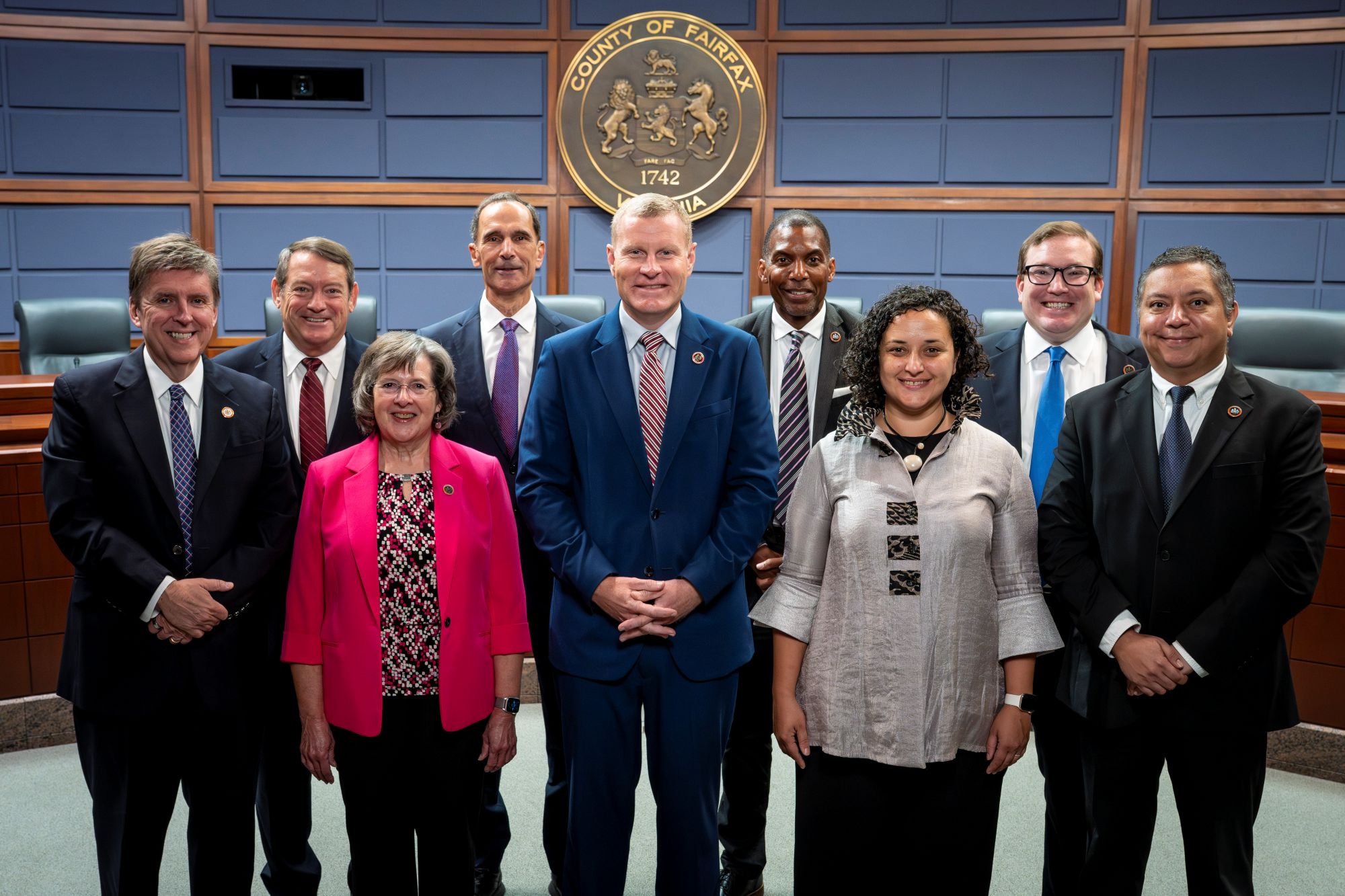Report on U.S. Congressional Environmental Policy and its Implications for Sustainable Development Goals
A series of recent U.S. House committee hearings and markups have brought natural resource policy to the forefront, revealing significant legislative and fiscal proposals that stand to impact the nation’s progress toward key Sustainable Development Goals (SDGs). Discussions centered on federal agency funding, endangered species management, and pollution control, highlighting a coordinated effort to reshape U.S. environmental law and its implementation.
Fiscal Proposals and their Threat to Environmental SDGs
The House Appropriations Subcommittee on Interior, Environment, and Related Agencies advanced a FY2026 spending bill containing substantial budget cuts that directly threaten the achievement of several SDGs, including SDG 15 (Life on Land), SDG 14 (Life Below Water), SDG 13 (Climate Action), and SDG 6 (Clean Water and Sanitation).
- Environmental Protection Agency (EPA): A proposed 23% budget cut jeopardizes core functions related to the Clean Water and Clean Air Acts, undermining SDG 6 and SDG 3 (Good Health and Well-being). Opponents noted this would shift unfunded mandates to state and local governments and curtail research on emerging pollutants like PFAS.
- U.S. Fish and Wildlife Service (USFWS): A 6% reduction ($108.7 million) directly impacts the primary agency for implementing the Endangered Species Act (ESA), hindering progress on SDG 15.
- National Park Service (NPS): A 6% cut ($2.54 billion) reduces capacity for managing protected areas, a key target of SDG 15.
- Bureau of Land Management (BLM): An 8% cut ($110.4 million) affects the stewardship of 245 million acres of public land, impacting biodiversity and ecosystem health (SDG 15).
- U.S. Geological Survey (USGS): A 5.6% funding decrease weakens the scientific foundation for wildlife and land management, impeding evidence-based policymaking essential for all environmental SDGs.
Legislative Actions Targeting Biodiversity and Life on Land (SDG 15)
The legislative proposals and policy riders embedded within the appropriations bill demonstrate a clear intent to alter the management of biodiversity, directly challenging the targets of SDG 15, which calls for urgent action to halt biodiversity loss and protect threatened species.
- Endangered Species Act (ESA) Restructuring: The appropriations bill includes policy riders that would cut funding for endangered species by two-thirds. This directly affects federally protected species such as:
- Gray wolf (Canis lupus)
- Grizzly bear (Ursus arctos horribilis)
- Wolverine (Gulo gulo luscus)
- State Management and Judicial Limitation: Bills such as H.R. 281, the “Grizzly Bear State Management Act of 2025,” and H.R. 1897 seek to delist specific populations, transfer management authority to states, and explicitly bar judicial review of these decisions. This approach raises concerns about the consistency and scientific rigor of species protection efforts.
- Restrictions on Pollution Control: H.R. 556, the “Protecting Access for Hunters and Anglers Act of 2025,” aims to prohibit restrictions on lead ammunition and tackle on public lands unless a direct, primary cause for wildlife decline can be proven for a specific unit of land. Critics argue this sets an unattainable scientific standard that would delay protective action against a known toxin, undermining efforts to protect terrestrial and aquatic ecosystems (SDG 15 and SDG 14).
Implications for Climate Action and Institutional Integrity (SDG 13 & SDG 16)
The policy direction extends beyond biodiversity to affect climate and governance goals. The use of legislative tactics to bypass established environmental laws challenges the stability and effectiveness of the institutions charged with protecting natural resources, a core tenet of SDG 16 (Peace, Justice and Strong Institutions).
- Fossil Fuel Development: The appropriations bill includes a mandate to issue onshore oil and gas lease sales, an action contrary to the objectives of SDG 13 (Climate Action) and SDG 7 (Affordable and Clean Energy).
- Erosion of Governance: The strategy of using appropriations riders and legislation to rewrite foundational environmental policy, limit scientific agency authority, and block judicial oversight represents a significant challenge to the principles of transparent and accountable governance outlined in SDG 16.
SDGs Addressed in the Article
SDG 15: Life on Land
- The article is fundamentally about the protection of terrestrial ecosystems and biodiversity. It discusses proposed budget cuts to agencies responsible for land and wildlife management (U.S. Fish and Wildlife Service, National Park Service, Bureau of Land Management, U.S. Forest Service), debates over the Endangered Species Act (ESA), and the management of specific species like the grizzly bear, gray wolf, and wolverine. It also covers issues of pollution on land, such as the impact of lead ammunition.
SDG 16: Peace, Justice and Strong Institutions
- The article highlights a conflict over governance and institutional effectiveness. It describes how appropriations bills are being used with “policy riders” to “rewrite environmental policy by decree,” undermining the standard legislative and regulatory processes. The discussion on limiting judicial review for delisting decisions and the overall debate about “legislative overreach” directly relate to the goal of having effective, accountable, and transparent institutions.
SDG 6: Clean Water and Sanitation
- The article mentions threats to water quality. It notes that major cuts to the Environmental Protection Agency (EPA) would impact the Clean Water Act and curtail “important research on emerging pollutants, such as PFAS—so-called ‘forever chemicals.'” This connects directly to the goal of protecting water resources from pollution.
SDG 14: Life Below Water
- The issue of pollution from lead tackle is discussed. The article mentions the debate around H.R. 556, which addresses restrictions on lead tackle on public lands. Lead tackle that enters water bodies is a form of land-based pollution that affects aquatic ecosystems, connecting the issue to the health of life below water.
SDG 17: Partnerships for the Goals
- The article shows a lack of policy coherence for sustainable development, where fiscal policy (budget cuts) is used to counteract environmental policy (ESA, Clean Water Act). It also provides an example of a civil society partnership, The Wildlife Society (TWS), which is “actively following and engaged in the U.S. congressional appropriations process” and encourages its members to advocate for conservation funding.
Specific SDG Targets Identified
SDG 15: Life on Land
- Target 15.5: “Take urgent and significant action to reduce the degradation of natural habitats, halt the loss of biodiversity and, by 2020, protect and prevent the extinction of threatened species.” This is the most central target. The article details legislative efforts to delist protected species (grizzly bear, gray wolf, wolverine), cut funding for the ESA by two-thirds, and reduce the budgets of agencies that manage habitats, all of which directly impact this target.
- Target 15.1: “By 2020, ensure the conservation, restoration and sustainable use of terrestrial and inland freshwater ecosystems and their services…” The proposed budget cuts to the Bureau of Land Management (8% cut), National Park Service (6% cut), and U.S. Forest Service threaten the conservation and sustainable use of the millions of acres they manage.
- Target 15.9: “By 2020, integrate ecosystem and biodiversity values into national and local planning, development processes, poverty reduction strategies and accounts.” The article describes a political battle where these values are at risk of being removed from national planning. The appropriations bill, with its deep cuts to environmental protection and mandates for oil and gas leases, represents a failure to integrate biodiversity values into the national budget process.
SDG 16: Peace, Justice and Strong Institutions
- Target 16.6: “Develop effective, accountable and transparent institutions at all levels.” The article describes how the use of “policy riders” in spending bills undermines the effectiveness and transparency of environmental agencies like the EPA and USFWS. The proposed 23% cut to the EPA and 6% cut to the USFWS directly challenge their ability to function effectively.
- Target 16.7: “Ensure responsive, inclusive, participatory and representative decision-making at all levels.” The legislative push to “bar judicial review” of the grizzly bear delisting decision, as mentioned in the context of H.R. 281, is a direct attempt to limit participatory and accountable decision-making processes.
SDG 6: Clean Water and Sanitation
- Target 6.3: “By 2030, improve water quality by reducing pollution, eliminating dumping and minimizing release of hazardous chemicals and materials…” The article warns that stripping EPA’s support would impact the Clean Water Act and cut research on hazardous “forever chemicals” like PFAS, thereby hindering progress toward this target.
SDG 17: Partnerships for the Goals
- Target 17.14: “Enhance policy coherence for sustainable development.” The article exemplifies a lack of coherence, describing how lawmakers are using “every available tactic, including appropriations, legislation, and political messaging” to advance a deregulatory agenda that directly conflicts with established environmental protection laws like the ESA and Clean Water Act.
Implied or Mentioned Indicators
Indicators for SDG 15 (Life on Land)
- Funding for biodiversity protection: The article provides specific figures that can serve as indicators of commitment to conservation. These include the proposed “23% cut to the Environmental Protection Agency (EPA),” “6% overall reduction…to the U.S. Fish and Wildlife Service,” and a plan to “cut funding for endangered species by two-thirds.”
- Status of threatened species: The conservation status of the grizzly bear, gray wolf, and wolverine are central to the debate. Legislative actions to delist them under the ESA serve as a direct indicator of policy changes affecting threatened species.
- Habitat management funding: Budget allocations for land management agencies are a clear indicator. The article specifies an “8% cut, or $110.4 million” for the Bureau of Land Management and a “6% cut amounting to $2.54 billion less than FY2025” for the National Park Service.
- Land use policy: The mandate to issue “at least four onshore oil and gas lease sales in any state with available land” is a specific, measurable indicator of land use priorities shifting away from conservation.
Indicators for SDG 16 (Peace, Justice and Strong Institutions)
- Legislative process integrity: The use of “policy riders embedded throughout” appropriations bills is identified as a key tactic. The number and scope of such riders can be an indicator of legislative overreach and a lack of transparent policymaking.
- Access to justice: The provision in H.R. 281 to “bar judicial review” of a delisting decision is a direct, measurable action that serves as an indicator for this target, showing an attempt to limit legal recourse and accountability.
Indicators for SDG 6 & 14 (Clean Water & Life Below Water)
- Pollution control regulations: The debate over H.R. 556, which would “prohibit blanket restrictions on lead ammunition and tackle,” is an indicator of changing regulatory approaches to known pollutants.
- Funding for environmental science: The article implies that progress is measured by scientific data. It notes the contradiction of demanding “better data” on lead impacts while simultaneously “underfunding monitoring” and “fir[ing] the data gatherers.” Cuts to the U.S. Geological Survey (5.6% below FY2025) and EPA research on pollutants like PFAS are tangible indicators of a decline in scientific capacity.
Summary of Findings
| SDGs | Targets | Indicators |
|---|---|---|
| SDG 15: Life on Land |
15.5: Protect and prevent the extinction of threatened species.
15.1: Ensure the conservation and sustainable use of terrestrial ecosystems. 15.9: Integrate ecosystem and biodiversity values into national planning. |
– Funding for endangered species (proposed two-thirds cut). – Conservation status of species (grizzly bear, gray wolf, wolverine). – Budget for land management agencies (e.g., 8% cut to BLM, 6% to NPS). – Mandated number of oil and gas lease sales (at least four). |
| SDG 16: Peace, Justice and Strong Institutions |
16.6: Develop effective, accountable and transparent institutions.
16.7: Ensure responsive, inclusive, and participatory decision-making. |
– Budget for key institutions (e.g., 23% cut to EPA). – Use of policy riders in appropriations bills. – Legislative provisions that bar judicial review. |
| SDG 6: Clean Water and Sanitation | 6.3: Improve water quality by reducing pollution and minimizing release of hazardous chemicals. |
– Funding for the Clean Water Act. – Funding for research on emerging pollutants (e.g., PFAS). |
| SDG 14: Life Below Water | 14.1: Prevent and significantly reduce marine pollution of all kinds, in particular from land-based activities. | – Regulations on the use of lead tackle on federal land and water. |
| SDG 17: Partnerships for the Goals | 17.14: Enhance policy coherence for sustainable development. |
– Conflicting policies where fiscal bills (appropriations) undermine environmental laws (ESA). – Engagement of civil society (The Wildlife Society) in the legislative process. |
Source: wildlife.org






